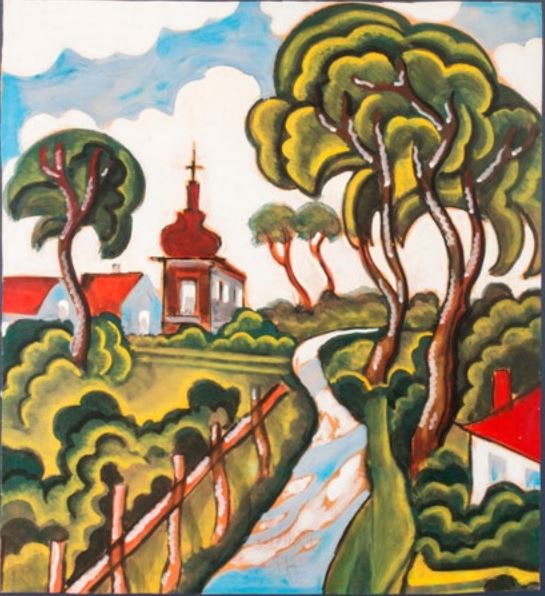Description
In the vast panorama of European art of the twentieth century, the figure of Hugó Scheiber emerges with an aura of singularity and dynamism. The paint "Forbidden Park 1940" (Parkban 1940) stands as an eloquent testimony of its ability to capture the ephemeral and the eternal in a single line. This oil on canvas, dated in the ominous year of 1940, not only encapsulates the essence of the artist, but also reflects a historical moment full of tensions and changes.
The "forbidden park" composition is a visual symphony where each element seems to move in a constant dance. Scheiber uses a vibrant and contrasting palette that, despite the shady tones of the time, radiates an almost futuristic energy. Intense green colors, bright and deep blue oranges build a landscape that is not merely representational, but rather spiritual and emotional.
The scene takes place in a park that, although "prohibited" according to the title, is open and full of life. In it, you can see stylized, almost abstract human figures, which seem to dialogue with each other and with the environment. These figures, with their elongated forms and their suggestive movements, are a classic example of the characteristic style of Scheiber, influenced by the futurism and expressionism of the time.
An interesting individual of the work is the use of space and perspective. Scheiber does not conform to traditional conventions; Instead, it challenges the viewer to participate in the scene, to be carried away by the curved lines and interspersed shapes that guide the other end of the canvas. This technique not only generates a sense of depth and movement, but also invites a personal interpretation of each element.
The title "Forbidden Park" adds a layer of mystery and intrigue. In the context of 1940, in the middle of World War II, a reference to the restrictions and fears of the time can be intuit. However, Scheiber does not fall into pessimism; On the contrary, it offers a vision that, although loaded with tension, also suggests hope and life.
Hugó Scheiber, born in Budapest in 1873, was an artist who sailed multiple currents and styles before finding his own voice. His work is an amalgam of influences, from European avant -garde to Hungarian traditions. Scheiber was a member of the KUT Group (Association of Hungarian Artists), where he surrounded himself with other talents of his time. Throughout his career, he participated in numerous international exhibitions, including the exhibition of contemporary art of Vienna and the Venice Biennale.
Scheiber's work, including "forbidden Park", not only stands out for its technique and color, but also for its ability to transmit deep emotions. Each stroke seems loaded with meaning, each figure encapsulates not told stories. It is in this ability to evoke the invisible where the true strength of his art lies.
In conclusion, "Forbidden Park 1940" is much more than a simple paint; It is a dialogue between the past and the present, between the forbidden and the possible. It is a clear example of the genius of Hugó Scheiber and his ability to transform reality into something deeper and more complex. In a world where uncertainty was the norm, Scheiber offers us a break of hope, a window to a universe where there is still room for beauty and movement.
KUADROS ©, a famous paint on your wall.
Hand-made oil painting reproductions, with the quality of professional artists and the distinctive seal of KUADROS ©.
Art reproduction service with satisfaction guarantee. If you are not completely satisfied with the replica of your painting, we refund your money 100%.

